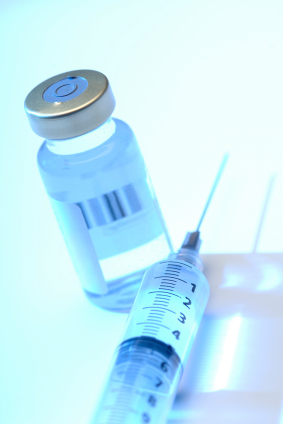
Firstly, actual “cortisone” is very rarely used anymore (if at all?) but, as it is a term everyone is familiar with, the name cortisone is usually used when referring to any corticosteroid injection. I can’t think of any other class of medication where this is done. In this article I’ll refer to cortisone and corticosteroids as CS and corticosteroid injections as CSI.
So what is it?
CS are just a group of very potent anti-inflammatory medications that work via a different biochemical pathway to standard anti-inflammatories. In simple terms, they mimic cortisol which is a hormone that is naturally produced in the body. As such, CS have a wide variety of effects on almost every type of cell in the body. When used locally they suppress inflammation by reducing the leakiness of blood vessels and suppressing the recruitment and activity of inflammatory cells
Is a cortisone injection merely a pain reliever and 'band-aid' remedy?
Used locally, CSs are just potent anti-inflammatories – they are not pain killers. What’s the difference? CSs will only reduce pain by treating and resolving inflammation. They will make no difference at all for painful conditions where inflammation is not the problem. But if inflammation is the problem they can lead to complete and permanent resolution.
Consider these 3 situations;
1. In many conditions the only problem is that the body has mounted an inappropriate and excessive inflammatory response. In these situations, inflammation is the problem and CSIs can be a permanent cure.
(includes conditions such as bursitis, synovitis and tenosynovitis)
2. Some conditions have underlying structural damage causing excessive inflammation. In these situations CS will only settle the inflammation and not address the underlying issue. This doesn’t always mean that CS shouldn’t be used, it simply means that it can only be a small part of the solution.
3. Other conditions have pain that is not created by a mechanism of excessive inflammation. CSs will not be helpful at all
A fourth situation is where the diagnosis is uncertain and CSIs can be a useful tool to determine if it is an inflammatory condition or not.
For what conditions are cortisone injections used?
A few examples are (an incomplete list);
- Bursitis (of the hip, knee, elbow, shoulder, heel and others)
- Synovitis aka joint inflammation (including knee, hip, shoulder, fingers, toes, ankle, facet joints in the spine and many more)
- Tendon sheath inflammation (aka tenosynovitis)
- Tendon attachment inflammation (aka enthesitis)
- (note: these are different to mid-substance degenerative tendon conditions where CSIs can be ineffective or even harmful)
- Frozen shoulder
- Plantar Fasciitis,
- Illiotibial Band Friction Syndrome
- Anywhere where a nerve entrapment occurs (including carpal tunnel syndrome and spinal nerve entrapments)
- Some Lumbar disc injuries (not all)
What are the disadvantages and side effects of CSIs?
All medications have potential side effects and all procedures have potential risks.
Uncommon side effects include:
- Atrophy (shrinkage) of the skin and the layer of fat underneath the skin
- Depigmentation (loss of pigment in the skin at the injection site)
- Insomnia for 1 or 2 nights after the injection
- A flare which is redness and pain at the injection site for 2 days after the injection
- Sweating, dizziness and facial flushing (hot and red face) for a day or two.
Complications:
- Any medical procedure that involves a needle has a risk of infection, bleeding and bruising.
Special cases;
- In people who have diabetes cortisone injections can elevate the blood sugar level.
- In patients with underlying infections, cortisone injections can suppress the body's ability to fight the infection and possibly worsen the infection
What about all the other stuff I read on google?
Sometimes my patients ask about other side effects they’ve read about. There is a HUGE difference between CSs used as a single local injection and CSs being administered to the entire body through the blood stream in a continuous course. A single injection (or even multiple single injections) will never give someone stretch marks, easy bruising, weight gain, acne, osteoporosis or avascular necrosis.
How many cortisone injections can someone receive?
There is no magical number but there are a few considerations. Repeat injections into the same area over a short period of time may weaken some of the connective tissue. This is a bigger issue if the injection is given near a tendon than if it is delivered into the fluid-filled space of a joint. The main reason repeat injections are avoided is that their requirement indicates that an underlying cause of the problem is not being addressed.
Are cortisone injections painful?
Some patients come in fearing the worst as they’ve been told CSIs can be very painful. Almost all of them leave saying “is that all it is?” In an expert's hands there is minimal pain from the injection but that can vary depending on the site and nature. Injections for plantar fasciitis are usually much more painful than a knee joint injection for example but with extra care and appropriate anaesthetic that can be significantly minimised.





















